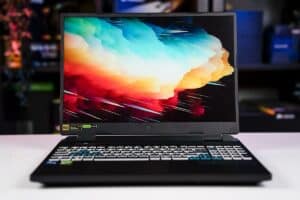Best gaming laptop in 2024 (RTX 4080, 4K, QHD, FHD)
We hand pick the best budget, mid-range, high refresh rate, 4K, and 1440p gaming laptops
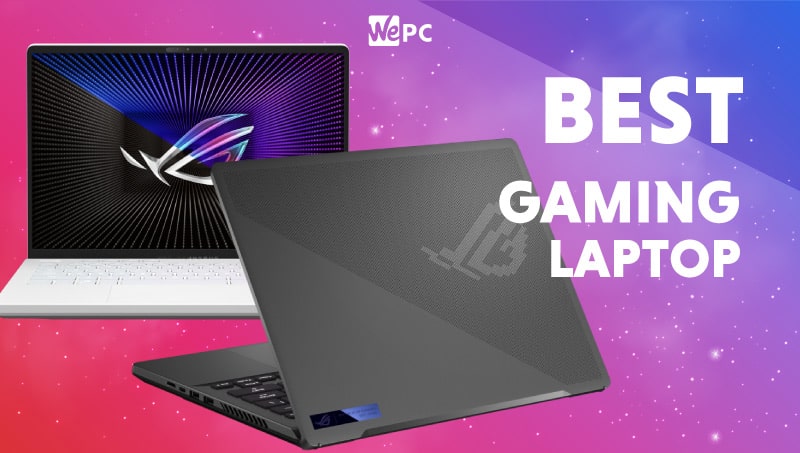
WePC is reader-supported. When you buy through links on our site, we may earn an affiliate commission. Prices subject to change. Learn more
If you’re looking for the best gaming laptop in 2024, look no further. Gaming laptops are becoming increasingly popular in today’s market, and naturally, everyone wants to know what the best model is for their budget and needs.
As we’ll discuss below, gaming laptops are about more than just RGB lighting or an RGB keyboard – it’s about having powerful enough components to run games and a fast enough display to appreciate this power. Our comprehensive guide will not only cover multiple different price points but also take you through what you need to think about when making your decision, so let’s dive right in!
Gaming laptop deals
- CORSAIR – Voyager a1600 16” 240Hz Gaming Laptop QHD – Save $500
- Acer Nitro 5 15.6″ Gaming Laptop – Save $330 NOW!
- ASUS ROG Strix G16 (i7-13650HX, RTX 4060) Gaming Laptop – save 21% now!
- Acer Nitro 17 Gaming Laptop (165Hz QHD, RTX 4060) – Save 29% now!
- ASUS ROG X13 Touchscreen Gaming Laptop – $768 off
- ASUS ROG Strix G16 (i9-13980HX, RTX 4070) – Save 15% NOW!
- Acer Predator Helios 16 Gaming Laptop (165Hz QHD+, RTX 4060) – Save $350 now!
- Lenovo Legion Pro 5i Gaming Laptop (RTX 4070) – Save $398.06 now!
- Alienware X17 R2 (360Hz FHD, RTX 3070 Ti) – Save 17% now!
- ASUS ROG Zephyrus Duo 16 – Save 30% NOW!
Best gaming laptop 2024: products at a glance

ASUS ROG Strix G18 (i9-13980HX, RTX 4080)
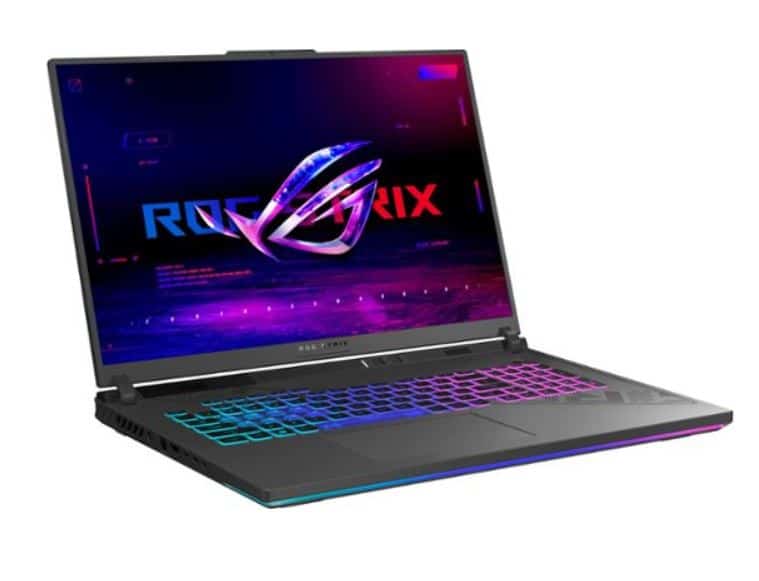
CPU
Intel Core i9-13980HX
Graphics Card
Up to NVIDIA GeForce RTX 4080
RAM
16GB/32GB/64GB DDR5 RAM
Storage
1TB-2TB SSD
Max Refresh Rate
240Hz
Resolution
2560 x 1600

GIGABYTE AORUS 17H (i7-13700H, RTX 4080)

CPU
Intel Core i9-13700H
Graphics Card
NVIDIA GeForce RTX 4080
RAM
16GB DDR5 RAM
Storage
1TB SSD
Max Refresh Rate
360Hz
Resolution
1920 x 1080

Razer Blade 16 (4K/FHD, i9-13950HX, RTX 4090)
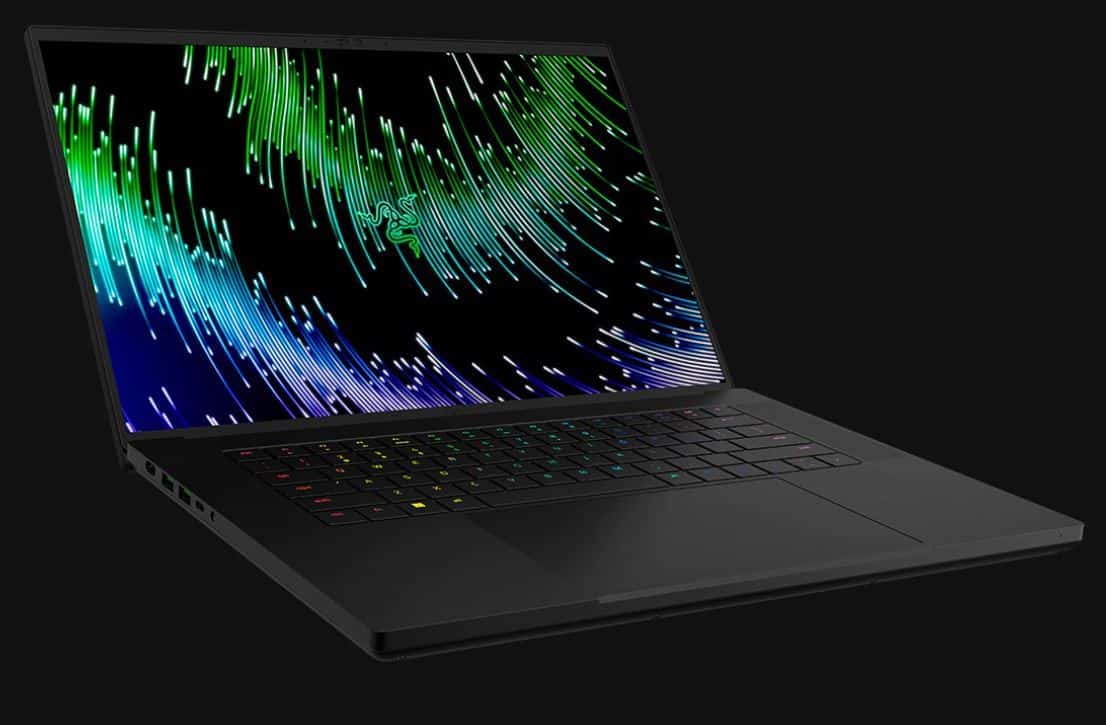
CPU
Intel Core i9-13950HX
Graphics Card
NVIDIA GeForce RTX 4090
RAM
16GB / 32GB DDR5 RAM
Storage
2TB SSD
Max Refresh Rate
120Hz / 240Hz (switches between both)
Resolution
4K / FHD (switches between both)
ASUS ROG Strix G15 Advantage Edition (300Hz 1080p)

CPU
AMD Ryzen 9 5900HX
GPU
AMD Radeon RX 6800M
RAM
16GB
Storage
512GB SSD
Screen Size
15.6″
Max Refresh Rate
300Hz

Razer Blade 14 AMD Gaming Laptop (RTX 3080, 1440p, 165Hz)

CPU
AMD Ryzen 9 5900HX
Graphics
NVIDIA GeForce RTX 3080 (8GB) 90-100W
RAM
16GB
Storage
1TB SSD
Screen Size
14”
Max Refresh Rate
165Hz
The best gaming laptop vs the best laptop
What separates a “gaming laptop” from just a laptop is not always a clear-cut line (it may shock you to learn it’s got very little to do with RGB). The first basic requirement is that it has to have the graphics card and CPU power to run games at a respectable Frames Per Second: 100 FPS+ as a minimum for competitive, fast-paced games and around 60 FPS+ for slower, story-based games being the general rule of thumb. All of the below laptops are capable of producing this level of performance on the latest games, though of course, this may require the video settings of the games in question to be turned down for the cheaper, budget entries on this list.
High refresh rates: a 120Hz laptop, 144Hz laptop, or higher for gaming?
The second most important consideration for a gaming laptop is that the display of the laptop has a fast enough refresh rate that the gamer can actually experience gameplay at the frame rates the hardware (e.g. 120FPS requires at least a 120Hz display). Each of the laptops listed here has a frequency of at least 120Hz – which most would consider the requirement of a gaming display. The 144Hz laptop display is ideal for the majority of gamers, though those interested in fast-paced competitive online shooters may want to prioritize a higher refresh rate. Bear in mind though that you get diminishing returns in the subjective experience the higher you go: the difference between a 144Hz and a 240Hz laptop will definitely not be as pronounced as between a 60Hz and 144Hz laptop, despite the bigger difference in Hz. Additionally, if your laptop isn’t powerful enough to generate sufficient FPS at your desired graphical settings, then having a high hz laptop is relatively pointless. Read our ‘Things to Consider‘ section below for more things you should look out for.
Best gaming laptop 2024: reviews
Best high-end gaming laptop
A very powerful 240Hz 1600p gaming laptop at a good price

ASUS ROG Strix G18 (i9-13980HX, RTX 4080)

CPU
Intel Core i9-13980HX
Graphics Card
Up to NVIDIA GeForce RTX 4080
RAM
16GB/32GB/64GB DDR5 RAM
Storage
1TB-2TB SSD
Max Refresh Rate
240Hz
Resolution
2560 x 1600
- good value for money
- very powerful GPU & CPU
- 240Hz 1600p display with good response time
- good color replication
- somewhat plastic build
- some coil whine and fan noise under heavy loads
- sub-par webcam quality
The ASUS ROG Strix G18 (not to be confused with its more expensive Strix SCAR 18 cousin) not only comes with the very impressive RTX 4080 laptop GPU, with all the performance benefits of DLSS 3.0, but also the most powerful CPU currently available: the Intel Core i9-13980HX. Simply put, this machine will annihilate anything you throw at it, with extreme prejudice.
Although the 18-inch size of the display on the G18 might be a bit too unwieldy for those looking for a more portable machine, it’s fantastically immersive, particularly with the extra headroom afforded by the 16:10 aspect ratio. The 240Hz QHD+ display is just the right balance between high-resolution and speed – making it ideal for either single player titles or fast-paced online shooters. The 5.5ms average grey-to-grey response time also helps minimise ghosting.
So popular was this laptop that it went out of stock almost immediately at Best Buy, where it was being sold for the stupendously cheap price of $2,499 USD. We’re not sure if you’ll find it as cheap as this going forward, but even if you have to pay a couple of hundred dollars more that’s still good value for a gaming laptop of this power with this display.
Of course for this value there are some sacrifices: the plastic build isn’t up there with the likes of the sleek Razer Blade laptops, although it’s sturdy enough. It can get a bit noisy in terms of the fans (though that’s not uncommon) but also with coil whine according to some user reports when it’s put under stress. The webcam quality also leaves something to be desired. Some of these issues aren’t present in the more expensive ASUS ROG Strix SCAR 18, which has a better webcam, more USB ports, as well as superior RGB, but still comes with a fairly plastic build. Another alternative is the XMG Neo 17 E23 (in Europe) / Eluktronics MECH17 GP2 (in the US), which has a superior Cherry MX mechanical keyboard option and compatibility with external OASIS liquid cooling, to further maximise performance, though again this is more expensive than the ASUS G18 and you’re limited to a maximum 17.3” size (16-inch variants are also available).
Pound for pound though, the ASUS ROG Strix G18 is the best gaming laptop currently on the market.
Best 360Hz gaming laptop
The most affordable RTX 4080 laptop on the market with a high refresh rate and solid battery life

GIGABYTE AORUS 17H (i7-13700H, RTX 4080)

CPU
Intel Core i9-13700H
Graphics Card
NVIDIA GeForce RTX 4080
RAM
16GB DDR5 RAM
Storage
1TB SSD
Max Refresh Rate
360Hz
Resolution
1920 x 1080
- unbeatable value for an RTX 4080 laptop
- very powerful GPU & powerful CPU
- ridiculously high 360Hz refresh rate
- great battery life for such a powerful laptop
- 1080p resolution may be too low for some at 17.3”
- plastic build
- performance enthusiasts may wish for more RAM options
- only 720p webcam
If you’re looking for very powerful yet affordable gaming laptop, and are only interested in lightning fast gaming on a full hd display (i.e. at 1080p resolution), then the Gigabyte Aorus 17H (2023) is the pick for you.
Simply put, you won’t find another RTX 4080 laptop this cheap, and though it has the less high-end Intel Core i7-13700H CPU than the one on the Strix G18, this is still a powerful processor that’s more than enough for gaming at this resolution.
The FHD 17.3” display has a stupidly high 360Hz maximum refresh rate, which is more than fast enough to maximise your advantage in any twitch-shooter. The claimed response time is 3ms, which is very respectable (though we’ve yet to test this ourselves to see how well this holds up). Color replication isn’t good enough for creative work, but the sRGB coverage is definitely good enough for gaming and the brightness and contrast are both respectable.
We would have liked to have seen higher RAM options than the 16GB 4800MHz on offer here, though apparently additional options will be coming out with superior memory at some point. In any case, you can upgrade this yourself later should it become an issue.
Build quality is a bit on the plasticky side, though that’s the price you pay for this level of value, and despite this the trackpad and keyboard are both solid and the laptop looks pretty good overall. Battery life clocks it at around 7 hours of general usage, which is impressive for core components of this power (and points to the increase in efficiencies of the RTX 40 series GPU architecture). All in all, this is a superb value gaming machine.
Best 4K gaming laptop
A 120Hz 4K mini-LED laptop with RTX 4090 that can switch to a 240Hz 1200p mode

Razer Blade 16 (4K/FHD, i9-13950HX, RTX 4090)

CPU
Intel Core i9-13950HX
Graphics Card
NVIDIA GeForce RTX 4090
RAM
16GB / 32GB DDR5 RAM
Storage
2TB SSD
Max Refresh Rate
120Hz / 240Hz (switches between both)
Resolution
4K / FHD (switches between both)
- ridiculously powerful GPU & very powerful CPU
- very bright mini-LED screen
- great color replication
- 240Hz FHD/1200p mode for competitive gaming
- great build quality and aesthetic
- good voltage & fan customisation in onboard software
- very expensive
- 240Hz FHD mode is less sharp and requires reboot to switch on
- noisy fans when presets set to high
- battery life could be better (though could be worse)
The Razer Blade 16 with Intel Core i9-13950HX processor and Nvidia RTX 4090 graphics card is one of the most premium machines out there. Not only does it come with extremely powerful core components which will demolish any game at 4K resolution, it has the top notch build quality and slimline portability that Razer is well known for. Be aware though that using the (nicely in-depth yet easy to navigate) onboard software to maximise the laptop’s performance will cause the fans to get very loud, though you can tweak this to achieve the best balance for your needs, and turn them right down when not gaming.
What truly sets this laptop apart though, is the display. The screen is Mini-LED, which means that it has top-notch peak brightness (1,000 cd/m²) – ideal for working outdoors or in bright sunshine, and supports HDR mode. The 100% sRGB and DCI–P3 coverage makes it ideal for color-accurate workflows in either of these color spaces, and in games the colors really pop.
Besides this the screen has a unique feature – it can switch between UHD/4K resolution with a 120Hz refresh rate or to 1920 x 1200 resolution with a fast 240Hz refresh rate for competitive gaming. However the feature requires you to reboot the laptop which is a bit annoying but not too inconvenient – more unfortunate though is the picture definitely loses sharpness (more so than on a native 1200p screen) as the artificial resolution is engaged. It’s still a nice option to have though.
Although the 16-inch display is a great compromise between immersion and portability, for 4K we would ideally have liked a bit more real estate to make the most of the high resolution. If this is an issue for you, then we’d also recommend various previous-gen options, although none are without their drawbacks: the ASUS ROG Zephyrus S17 with its 17.3-inch 4K 120Hz screen and RTX 3080 has excellent display response time though doesn’t have the color replication of the Razer Blade 16 if you want this for creative use, and crucially for gamers it lacks both a MUX Switch and G-Sync; the 120Hz 17.3-inch MSI Raider GE76 UHD with RTX 3080 Ti has both a MUX Switch and G-Sync, but costs as much as the Razer Blade 16 despite having a previous gen CPU and GPU (though the latter is still very powerful and high-TGP); the older gen Razer Blade 17 might have a 144Hz UHD screen, but it’s limited to an RTX 3070 Ti, and not the highest TGP variant at that. None of these devices have the resolution & refresh rate switching mode that the new Razer Blade 16 does either.
Unsurprisingly for a mini-LED display, you’ll be lucky to get 4 hours of battery life out of this machine, but as far as gaming laptops go with components this powerful we’ve seen worse. All-in-all, if you can afford the steep asking price this is a beautifully designed gaming monster.
Best value gaming laptop
A superb 300Hz 1080p gaming laptop at a great price
ASUS ROG Strix G15 Advantage Edition (300Hz 1080p)

CPU
AMD Ryzen 9 5900HX
GPU
AMD Radeon RX 6800M
RAM
16GB
Storage
512GB SSD
Screen Size
15.6″
Max Refresh Rate
300Hz
- AMD Radeon RX 6800M GPU
- AMD Ryzen 9-5900HX CPU
- 3ms response time
- 300Hz display
- Terrific value
- Great battery life
- Respectable speakers
- slow stock RAM bottlenecks performance
- only 512GB SSD
- no webcam
- no SD card reader
- AMD GPU lacks Ray Tracing and DLSS
The ASUS ROG STRIX G15 Advantage Edition is the first big release in AMD’s Advantage series of gaming laptops, the design of which are all overseen by AMD to ensure that they meet certain minimum standards of efficiency and gaming performance. The big draw of this laptop is the area that counts of the most when gaming – the CPU and GPU combo. The Ryzen 9 5900HX CPU is the most powerful AMD processor you will get in any gaming laptop and the AMD Radeon RX 6800M graphics card packs a mighty punch, especially for this price – equivalent to an RTX 3070 albeit without the DLSS support and top-level Ray-Tracing. Indeed the price is probably the best thing about this beastly compact gaming machine – you won’t find better performance per price on almost any budget.
Realistically, it’s unlikely you will get close to anything like 300 FPS on any gaming laptop, unless you’re playing a particularly undemanding title on the lower settings, but the maximum 300Hz refresh rate of this display is still a great feature for the price, knowing that you’ll virtually never be capped in FPS terms by the display itself. The 5ms actual grey-to-grey response time is solid, the claimed 3ms being unrealistic as with any gaming laptop’s marketing in this area.
Color replication, peak brightness, and contrast aren’t up there with the likes of Razer and Alienware laptop displays, but they’re all respectable on this machine and certainly good enough for a gaming laptop. The thin bezels on every side but the bottom make the display enjoyable to look at, and we’re fans of the overall aesthetic of this machine with its red details and WASD keys.
The ASUS ROG STRIX G15 Advantage Edition is by no means the lightest laptop in its price range, but this definitely a worthy trade-off for the gaming performance and also the terrific battery life (for a gaming laptop) of around 9 hours when doing non-intensive tasks on the battery saver settings. Audio on this laptop is also certainly above average for a gaming laptop – not as good as a MacBook but certainly suitable for watching YouTube, Netflix etc.
Drawbacks of the machine are primarily the 512GB SSD size (if you go for the entry-level price) but also the low clock speed of the 16GB stock RAM – which has been shown to bottleneck gaming performance substantially (by at least 10% in most games). The first however can be upgraded with a bigger hard drive at the point of purchase, the latter you can do yourself without too much trouble, really unlocking the FPS potential of this machine. Besides this there is no webcam on this laptop – which may put off those looking for a dual-use office machine, although cheap external laptops are easy to find. The lack of an SD card reader could be more of an issue though. Still, this is a superb value gaming laptop and we heartily recommend it.
Best 14 inch gaming laptop
The most powerful 14″ gaming laptop with a superb display & build quality
Razer Blade 14 AMD Gaming Laptop (RTX 3080, 1440p, 165Hz)

CPU
AMD Ryzen 9 5900HX
Graphics
NVIDIA GeForce RTX 3080 (8GB) 90-100W
RAM
16GB
Storage
1TB SSD
Screen Size
14”
Max Refresh Rate
165Hz
- AMD Ryzen 9 5900HX is a great CPU
- RTX 3080 in a compact gaming laptop
- 1440p display
- Great color replication
- Great contrast and brightness
- Great build quality
- Thin and lightweight
- FreeSync
- Good response times for a smaller laptop
- Only 16GB RAM which cannot be upgraded
- Expensive
- Low TGP RTX 3080 GPU
- Only 8GB VRAM RTX 3080
- Fairly loud fans
Unless portability is your number one priority we wouldn’t normally suggest going with a 14-inch gaming laptop, as the loss of immersion in your games brought about by the smaller display is too detrimental. Similarly, a 1440p 14” display, like that the Razer Blade 14 comes with, seems particularly extravagant: the financial cost and FPS drop of the extra resolution just isn’t worth it on such a small screen, where 1080p will do just fine. All that being said, if you have your heart set on a gaming machine of this size, the Razer Blade 14 is well ahead of the competition, and its very impressive from a technical standpoint just to see how much power Razer has crammed into such a thin machine. Plus you can always use the included HDMI 2.1 port to connect to a larger external display.
The AMD Ryzen 9 5900HX CPU (the first ever instance of an AMD CPU in a Razer laptop) is still a great pick even though it’s older now. As is always the case with gaming notebooks however, performance sacrifices have to be made: the RTX 3080 is only an 8GB VRAM version (compared to the other 16GB VRAM ones listed here) and has a fairly low 90-100W TGP, purely due to the restrictions of the thin body, so you can’t expect performance akin to other, higher powered RTX 3080s, but it still does the job, and is ahead of any other gaming laptop of this size. You can still expect to get around 90 – 115 FPS in demanding games on the very highest settings if you turn down the resolution to 1080p.
The screen of the Razer Blade 14 has sRGB coverage of around 99.8% and Adobe RGB of approximately 83%, so it’s suitable for light color work in the sRGB space (something the higher 1440p resolution will help with for detailed graphics design work). The color replication is definitely great for gaming and the high contrast ratio and peak brightness create a vibrant, crisp image. Gray-to-gray response time is always slower in 14” machines, but the Razer Blade 14 again comes number one in this department, with a real, effective 9ms response time. The 165Hz refresh rate with FreeSync support also does the job for past-paced gaming.
In terms of weight, the Razer Blade 14 isn’t that light (though it’s not heavy either), but ergonomically it’s a marvel and can fit easily in even the smallest of briefcases, backpacks or what have you. Build quality is top of the line with a durable aluminium chassis that feels nice to the touch. Everything considered, this is the best 14-inch gaming laptop in the business.
Things to Consider when buying gaming laptops
An extensive guide to the considerations you should bear in mind when trying to find the best gaming laptop for your needs can be found on our ‘What To Look For In A Gaming Laptop’ page, however below are the main things you should think about before deciding which is the best gaming laptop for you to buy.
Gaming Laptops are expensive
The engineering required to cram the power of a desktop gaming PC into a thin, portable laptop is impressive but it’s also not cheap. You have to always bear in mind that the cash per performance of a laptop, in terms of its raw gaming power, is always going to be substantially less than with a desktop computer, because what you’re also paying for is the portability. No laptop on this page costs below $1,000, including our “Best Budget Gaming Laptop”, as, although cheaper laptops are available, we cannot honestly recommend them as being the best in their niche in terms of the level of gaming experience they provide.
Make sure you get the right model
As is also found with monitors, there are usually many variations and configurations of the same model of laptop that are advertised with the same name but have different specs. Often Amazon has the different configurations underneath the same listing (assuming they are in stock and not greyed out), which can be manually selected. Again as with monitors, if a precise code is available signifying the specific configuration you want you should check for this; often however this is not available, so making sure each and every specification is correct before you buy is very important. A big price difference may indicate you’re buying something different!
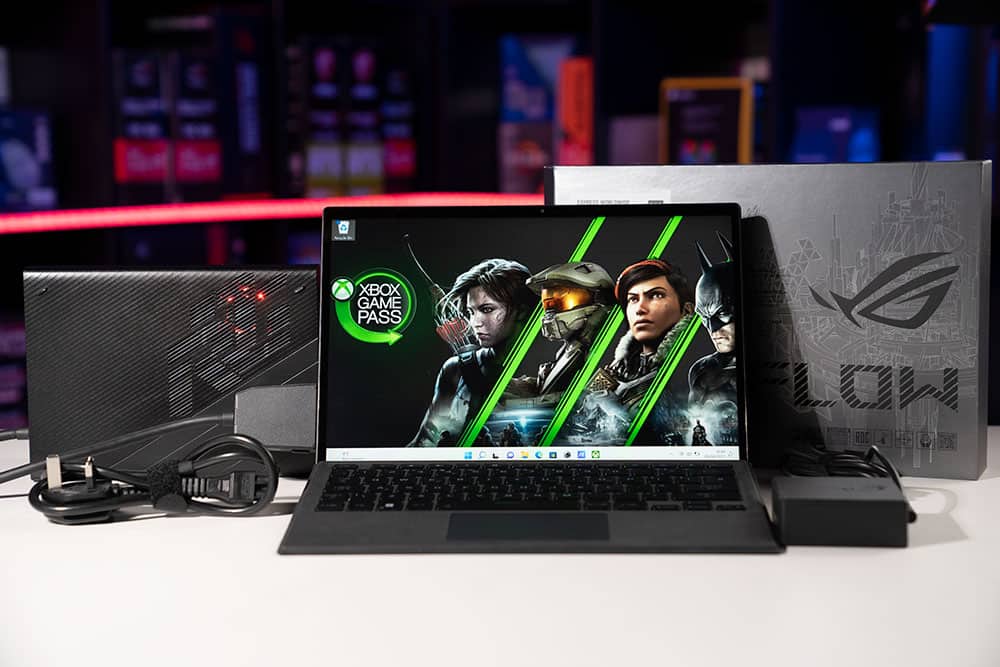
1080p vs 1440p gaming laptops
Whilst 1080p is still king when it comes to fast-paced online competitive shooters and the like, 1440p is on the way to becoming the new standard display resolution for games where squeezing every last frame is less paramount than having a visually immersive experience. For anything below a 17 inch screen however, we’d say the benefit you get for resolutions above 1080p is not massive: its noticeable, but potentially not worth the money. Remember: higher resolutions mean less FPS output from the same hardware, so if FPS is your number one priority, consider sticking to 1080p on a 15” screen. For everyone else, assuming you can afford it, 1440p on a 17” screen is a great option.
4K gaming laptops
All of the above points on 1440p resolution apply even more so to 4K gaming laptops. There is little point getting a 15” 4K display, unless you have specific needs for such resolutions based on visual design and other workstation uses or you just have money to burn. Even at 17” 4K is somewhat of an extravagance, and one has to consider the fact that playing demanding games at 4K resolution on even the most high-end laptop on Ultra settings is never going to get you an acceptable FPS: the technology simply hasn’t been developed yet to make this feasible in a laptop. Nevertheless, 4K gaming at lower than highest settings or on less demanding games is feasible, and you can always tweak the resolution down on those games which cannot handle it. Additionally, the non-gaming benefits of having a lush 4K screen for watching films and/or workstation use still apply – you will definitely notice a difference.

Noise levels & cooling in gaming laptops
If you are playing a game on a laptop, it’s invariably going to be noisy, unless the game is not very demanding. Higher performance components means more heat is generated, and this heat must be expelled. The difference therefore becomes one of degrees of noise when playing games, and this is generally much of a muchness. The bigger differentiator therefore tends to be how loud gaming laptops are when not gaming – i.e. how useful it is for doing other tasks without becoming irritating.
Similarly, heat being expelled rather than retained in the laptop is a good thing, even if it means that most of the best gaming laptops won’t be suited to on-lap play. The biggest concern when trying to decide between the best gaming laptops is how hot they get under your hands whilst you’re playing.
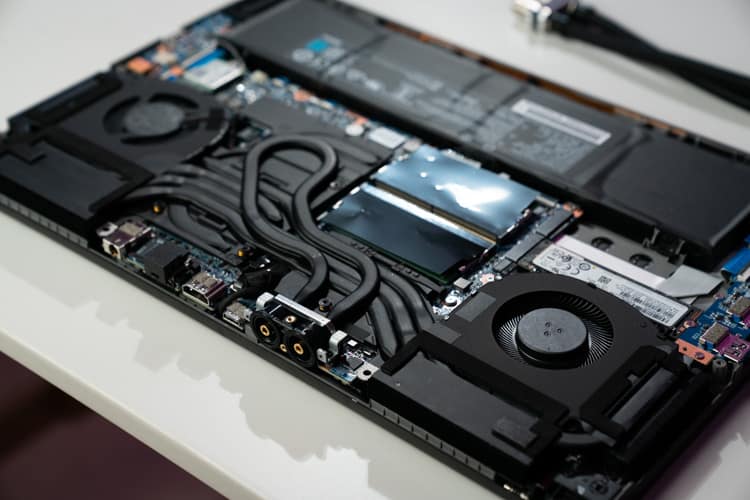
How long do gaming laptops last?
Unfortunately, there’s no straightforward answer to this. You should definitely expect to get a minimum of three years out of your gaming laptop, but if I’d splashed out the significant amount of money required to buy one and that’s how long it lasted, I would be less than pleased. After five years on most high-end gaming laptops you may start to notice performance drops as the internal components degrade, but it tends to be the battery which goes first, so replacing this can get another couple of years out of your machine, even if it’s not hitting quite as hard as it used to. The longevity of gaming laptops compared to non-gaming variants may be somewhat diminished due to the greater heat stresses that high-end components are put under during gaming sessions, and the difficulty cooling them within a laptop chassis.
Ultimately, the longevity of a laptop depends upon how the power supply and cooling of the laptop are constructed, the quality of the battery, and how you treat it. It’s very difficult to tell in advance when reviewing a laptop how long the battery will last, unless you can draw off other examples, perhaps from the same brand, that have known issues in this department, so this can be a bit of a lottery. Internal temperature benchmarks (which we now do in all of our in-depth reviews) will give you an idea how effective the internal cooling is and how likely the CPU and GPU are to go the distance. The one thing you can affect the most though is how you treat your beast – if you have voltage and fan controls for your machine, consider keeping the former low and the latter as high as they can be where possible. If you don’t need to push things to the max, then don’t. Investing in a laptop cooling pad can also help your laptop last longer and improve performance in games.
Gaming laptop battery life
Gaming laptops, due to their more powerful central components, typically have a much lower battery life than conventional laptops. You’d want your average general use laptop/notebook to last for at least an 8 hour working day when browsing the web and doing typical office functions, however you’ll be very lucky to get this on a gaming laptop – still, anything lower than 4 hours is pretty poor.
Are gaming laptops good for everyday use?
Gaming laptops require much more CPU and GPU power than is needed for the average day-to-day functionality, so in most cases they will not have any issues in doing your typical day-to-day tasks. However, there are areas which will often be sacrificed in favor of gaming power, particularly on the more budget gaming laptops. that will impact their utility. At the lower price range, screen brightness is often poor – working with your laptop outside for instance will often not be viable unless you opt for a premium gaming laptop. Similarly speaker quality (poor on most gaming laptops) and the aforementioned battery life both suffer.
Best gaming laptop FAQs
Is a gaming laptop or PC better?
Gaming laptops will never match desktop gaming PCs in terms of power for price, as discussed above. Additionally, there is a maximum limit imposed on the FPS a gaming laptop can produce due to restrictions of Wattage and cooling, compared to a desktop PC. Clearly though, a desktop cannot compare to a laptop when it comes to portability.
Do gaming laptops overheat?
Yes. Reducing overheating is one of the biggest engineering challenges by manufacturers of gaming laptops. The thin chassis of a laptop is not conducive to airflow from fans or spacious enough for other cooling solutions which can be used in desktop rigs, and gaming-focused machines use more powerful components than ordinary laptops, thereby leading to greater heat output. Additionally, it is difficult to cool the internal components whilst also minimizing the heat expelled onto a user’s hands or lap.
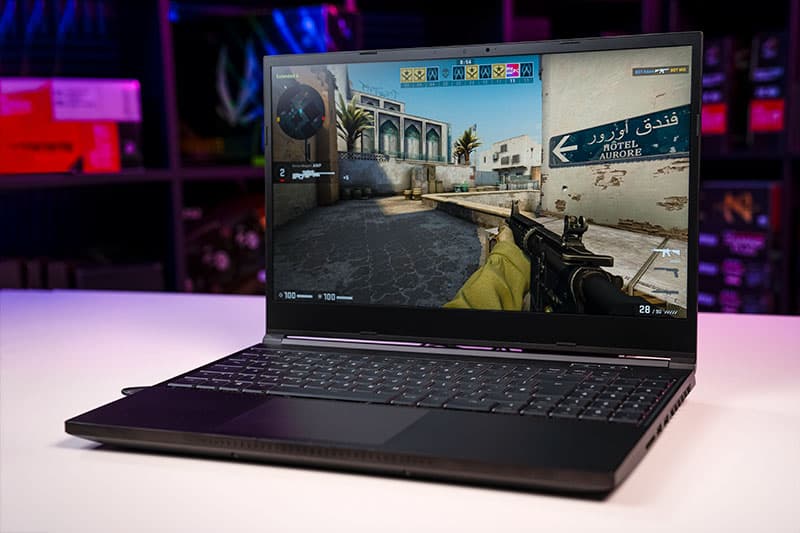
Other articles for best gaming laptop
In-depth laptop reviews
- ASUS ROG Zephyrus G14 (2022) Review
- ASUS ROG Zephyrus Duo 16 (2022) Review
- ASUS ROG Strix SCAR 17 SE (2022) Review
- ASUS ROG Flow X16 (2022) Review
- ASUS ROG Flow Z13 (2022) & ASUS ROG XG Mobile RTX 3080 Review
- Corsair Voyager a1600 (2022) Review
- XPG Xenia 15 RTX 2070 Max-Q Review
- Razer Blade Pro 17 1080p 360Hz (2021) Review
- Razer Blade 14 1440p 165Hz AMD Review
- XMG Neo 15 E21 / Eluktronics MECH-15 G3 (2021) Review
- XMG Neo 15 E22 / Eluktronics MECH-15 G3 (2022) & OASIS Liquid Cooling Review
- XMG Neo 17 (E23) / Eluktronics MECH-17 GP2 (2023) Review
‘Best of’ brand guides
- Acer gaming laptop
- Alienware gaming laptop
- ASUS gaming laptop
- Dell gaming laptop
- HP gaming laptop
- Lenovo gaming laptop
- MSI gaming laptop
- Razer gaming laptop
- RTX 3080 Ti laptop
- RTX 3080 laptop
- RTX 3070 Ti laptop
- RTX 3070 laptop
- RTX 3060 laptop
- RTX 3050 & 3050 Ti laptop
‘Best of’ price guides
- The best gaming laptops under $500
- The best gaming laptops under $600
- The best gaming laptops under $700
- The best gaming laptops under $800
- The best gaming laptops under $1,000
- The best gaming laptops under $1,500
- The best gaming laptops under $2,000
- The best gaming laptops under $2,500
Best gaming laptop : Final Word
So this has been our guide to the best gaming laptop in 2024. We hope it has been a stimulating read and has helped you come to a decision about which laptop is right for you. Other laptop guides linked to specific price points can be found in the recommended articles on this page, whether you be looking for 4K, 1600p, or 1080p displays on 360Hz, 240Hz, 165Hz and 120Hz laptops or other high refresh rates.
If you want more power for a lower cost than gaming laptops can provide, check out our guides on high-end desktop builds for under $1,500 and also the best pre-built PC for under $1,500.







